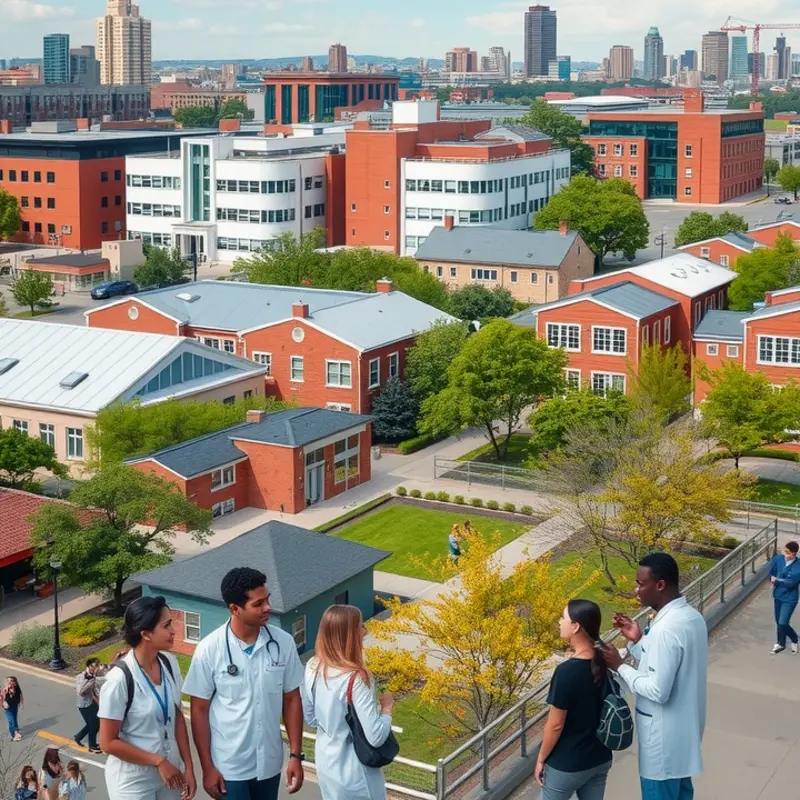Relocating to a new city can be a daunting experience, especially for healthcare workers balancing demanding jobs and family life. The housing market is ever-evolving, and understanding how to locate the right rental space is crucial for a smooth transition. Whether you’re a young professional just starting your career, a couple seeking more space, or a family attending to a new job at a healthcare facility, the rental landscape has a lot to offer. Dive into these tailored tips that cover multiple aspects that matter most to healthcare professionals. From identifying desirable neighborhoods to maximizing your budget and ensuring a hassle-free renting process, this guide will help empower you with the knowledge and confidence needed to find your ideal home.
Targeting the Right Neighborhoods

Healthcare professionals moving to a new city need to consider several factors when selecting the right neighborhood for renting. Proximity to work is often the top priority, reducing commute times and allowing for a better work-life balance. Moreover, being close to quality schools can be essential for those with families. Community resources, ranging from parks to libraries, play a significant role in enhancing quality of life.
While popular neighborhoods are well-known, many newcomers overlook hidden gems that offer great value and excellent amenities. In New York City, for instance, Inwood offers affordable rent and a peaceful environment, yet it remains close to vibrant areas and major hospitals. Similarly, Chicago’s Bridgeport neighborhood provides a suburban feel with easy access to medical centers.
In Austin, healthcare workers may want to explore the Brentwood area. It’s close to the University of Texas, ensuring easy access to facilities while maintaining a peaceful, family-friendly vibe. The area also boasts a variety of eateries and shops, providing ample convenience for busy professionals. Check out this link for more local insights.
Public transportation can deeply impact daily routines, especially in cities like San Francisco. The Mission District offers vibrant culture, easy transit options, and proximity to some top-ranked healthcare institutions. Efficient public transportation lessens the necessity for personal vehicles, significantly cutting down living costs for those on a budget.
In Seattle, neighborhoods such as Ballard offer unique benefits. Ballard provides a blend of urban and quaint neighborhood charms while being near several hospitals and clinics. Its amenities include waterfront parks and bustling farmer’s markets, ideal for relaxing after a long week of work.
Understanding the impact of local healthcare facilities on housing is crucial. Areas near newly developed hospitals might witness a rise in rental prices, yet they promise convenience that justifies the cost. To mitigate price surges, consider neighborhoods a little further away that still offer quick access by public transport or biking.
Choosing the right neighborhood involves balancing various factors aligned with personal and professional needs. By thoroughly researching and prioritizing what’s important, healthcare professionals can navigate the rental market efficiently and ensure their new residence contributes positively to their lifestyle.
Navigating the Rental Process

Embarking on the rental journey in a new city can be daunting, especially for healthcare workers who already shoulder demanding schedules. Understanding the rental application process is crucial, and it starts with gathering necessary documentation. Most rental applications require proof of employment, a letter from your employer, recent pay stubs, and possibly a credit report. These documents assure potential landlords of your ability to pay rent consistently. Healthcare workers can often use contracts or travel assignments as proof of employment, which is vital in short-term and contract-based roles.
Once your application is ready, establishing a good relationship with potential landlords can be instrumental. Communication is key—express your needs clearly and always respond promptly to inquiries. If you’re considering renting in various cities, try reaching out to local rental networks or healthcare associations for recommendations on landlord practices and advice to navigate city-specific regulations.
Securing a lease involves negotiation, and while it may seem challenging, it’s not impossible. Begin by researching comparable rents in the area to have a well-founded basis for negotiation. Healthcare workers might also inquire about discounts available to professionals in their field, especially since some property managers appreciate the reliable and stable nature of healthcare employment.
Understanding your rights as a tenant empowers you. Tenant rights vary by location, but generally include the right to a habitable living space and freedom from unlawful eviction. Familiarize yourself with local rental laws, which can often be found through city or state housing authorities’ websites. This knowledge will prevent potential disputes and help you understand your obligations.
When moving to a new city, it’s worthwhile to look for local resources such as rental assistance programs or support groups specifically geared toward healthcare professionals. These can provide a safety net should financial or housing issues arise, especially in high-demand areas. Online forums and specialized rental websites also offer advice and support, making the transition smoother.
Finally, consider strategies to improve your rental application, such as boosting your credit score. Exploring renter credit improvement tips can be a valuable resource. A stronger credit report can enhance your application, broaden your choices, and potentially lead to better rental terms.
By preparing thorough documentation, engaging actively with landlords, and leveraging available resources, healthcare workers can efficiently navigate the rental market in any city. Stay informed and proactive to ensure a successful transition to a new home.
Final words
Renting in a new city as a healthcare worker can seem overwhelming, but with the right information and preparation, it can be a fulfilling process. By focusing on neighborhoods that align with your lifestyle and understanding the rental process specific to your needs, you can find a space that feels like home. Don’t hesitate to reach out for local resources and support as you navigate this journey. Your next chapter is just around the corner.









